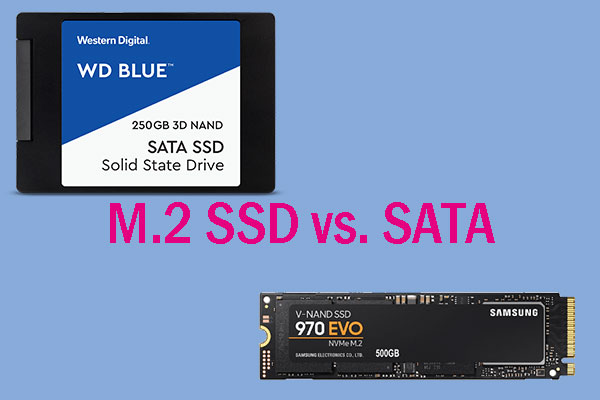Microsoft has confirmed that a Windows 11 bug messes SATA SSDs and hard drives. As a result, internal SATA devices show as removable media in the taskbar. This post from MiniTool Partition Wizard reports this issue and offers solutions.
Windows 11 Bug Messes SATA SSDs and Hard Drives
Microsoft has confirmed that Windows 11 users are also experiencing an odd bug with SATA hard drives. This Windows 11 bug messes SATA SSDs and hard drives. As a result, internal SATA devices show as removable media in the taskbar.
This bug actually appears not only on Windows 11, but also on Windows 10, 8.1, and 7. Why does this error occur? The reason is the BIOS. Whether or not a device is considered removable is determined by your system’s BIOS and how it marks the various SATA ports on the motherboard.
The inbox driver directly inspects SATA ports and considers devices connected to those ports marked “external” as removable devices. However, not all storage drivers do this, which can be a potential cause for corruption or data loss.
How to Fix the Windows 11 Bug
Many modern systems won’t be affected by the bug, as most SSDs these days aren’t SATA. However, if your PC comes with SATA ports, you may encounter this issue. To solve this issue, you can try the following 2 methods.
Way 1. Update BIOS
The bug is mainly caused by the BIOS. Therefore, updating the BIOS to the latest version may solve the issue. How to do that? Here are mainly 2 ways.
- If your PC has a PC manager tool from the manufacturer, you may be able to update BIOS using this software.
- You can download the BIOS file from the manufacturer’s website and then use the file to update BIOS. If the BIOS file is an executable file, run it to update BIOS directly. If the file is a CAP file, you need to place it into a USB drive and then update the BIOS.
To get the detailed steps, you can refer to this post: How to Update BIOS Windows 7 & Fix Issues in BIOS Update.
Way 2. Override the Way the Inbox Driver Surfaces Devices on Certain Ports
Step 1: Open Device Manager, expand Disk drives, identify the SATA device you would like the inbox driver to consider internal, right-click the hard drive, and choose Properties. On the General tab, find the Location information. You should pay attention to the Bus Number or the Channel number.
Step 2: Open a command prompt with administrator privileges. In the command prompt window, execute the following command to override the way the inbox driver surfaces devices on the port.
- For Windows 7: reg.exe add “HKLMSYSTEMCurrentControlSetServicesmsahciController0Channel#” /f /v TreatAsInternalPort /t REG_DWORD /d 0x00000001
- For Windows 8 and later: reg.exe add “HKLMSYSTEMCurrentControlSetServicesstorahciParametersDevice” /f /v TreatAsInternalPort /t REG_MULTI_SZ /d #
Note that # corresponds to the Bus Number or the Channel number you saw in Step 1.
To manage your SATA drives better on Windows, you can use MiniTool Partition Wizard. It is a professional disk and partition management tool
MiniTool Partition Wizard FreeClick to Download100%Clean & Safe
Bottom Line
MiniTool Partition Wizard can help you clone the system, manage disks better, and recover data. If you have this need, you can download it from the official website.


![Hard Drive Shows Up in Device Manager But Not This PC? [Fixed]](https://images.minitool.com/partitionwizard.com/images/uploads/2023/04/external-hard-drive-shows-up-in-device-manager-not-this-pc-thumbnail.jpg)
User Comments :